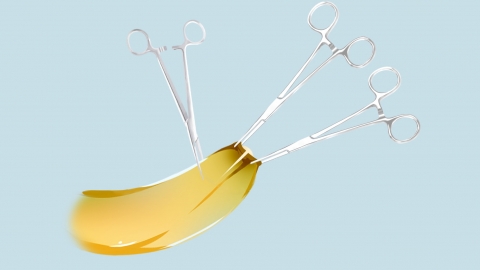How to treat concealed penis
Generally, concealed penis may be caused by congenital penile skin dysplasia, fat accumulation in the pubic area due to obesity, balanitis, penile scar contracture, hypospadias, and other factors. It is recommended to seek timely medical consultation, identify the underlying cause, and improve the condition under a doctor's guidance through general care, medication, or surgical treatment. Specific analyses are as follows:

1. Congenital penile skin dysplasia: Some children are born with naturally short penile skin that cannot adequately cover and support the penile shaft, causing the shaft to remain hidden beneath the skin and forming a concealed penis. Under a doctor's guidance, penile skin stretching exercises can be performed. Gently pull the foreskin daily to gradually widen the foreskin opening and elongate the skin. After each session, clean the area and return the foreskin to its original position, avoiding excessive force that might cause injury.
2. Fat accumulation in the pubic area due to obesity: In children or adolescents who are overweight, excessive fat may accumulate in the pubic symphysis area, concealing part of the penile shaft beneath the fat layer and giving the appearance of a concealed penis. It is important to adjust dietary habits, reduce intake of high-sugar and high-fat foods, consume more vegetables and high-quality protein, and engage in 30 minutes of moderate daily exercise such as rope jumping or brisk walking. This will gradually reduce fat in the pubic area, allowing the penile shaft to become naturally exposed.
3. Balanitis: Long-term accumulation of smegma between the foreskin and glans can lead to bacterial growth and inflammation. Repeated inflammation may cause adhesions between the foreskin and glans, worsening the concealment and accompanied by local redness, swelling, and itching. Follow medical advice to apply topical medications such as erythromycin ointment, mupirocin ointment, or fusidic acid cream to the affected area.
4. Penile scar contracture: After healing from balanitis or trauma, fibrous scars may form locally, causing contracture that pulls the foreskin and restricts penile extension. Scar contracture tends to be more persistent than inflammation. Mild scars can be treated with topical medications such as silicone gel, combination heparin sodium allantoin gel, or polysaccharide gel containing multiple sulfonic acids, as directed by a physician. Severe cases may require a circumcision scar release procedure to remove or loosen the contracted scar tissue and restore foreskin elasticity.
5. Hypospadias: Abnormal urethral development causes the urethral opening to be misplaced and is often accompanied by uneven foreskin distribution, pulling the penile shaft inward and potentially affecting urination. Treatment depends on the severity of the condition and may involve surgical options such as penile straightening to correct penile curvature combined with foreskin plastic surgery to redistribute foreskin tissue, improving the concealed appearance while repairing urethral structure to restore normal urination.
Maintain good genital hygiene in daily life by washing with warm water daily to prevent smegma buildup. Wear loose, breathable cotton clothing to reduce local friction.




